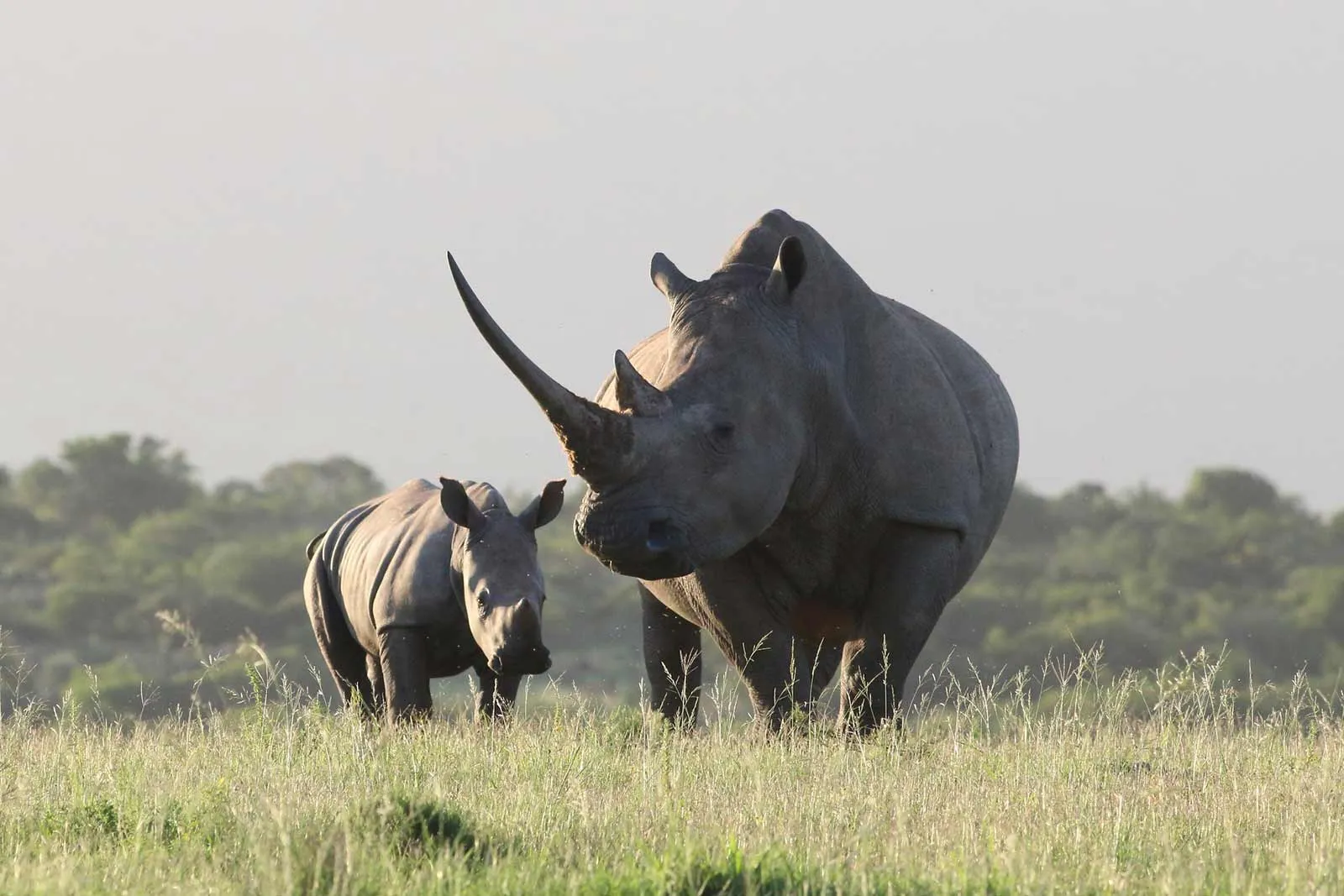10 Fascinating Facts About African Rhinos – A Detailed Overview
10 Fascinating Facts About African Rhinos. African rhinos, with their prehistoric charm and majestic presence, are among the most iconic and endangered species on the planet. As we celebrate the beauty of these incredible creatures on the occasion of their 1 year birthday, let’s delve into 10 fascinating facts about African rhinos that highlight their uniqueness and the conservation challenges they face.
Two Distinct Species:
African rhinos are divided into two species: the Black Rhino (Diceros bicornis) and the White Rhino (Ceratotherium simum). Despite their names, both species are usually gray, but the names are believed to originate from mistranslations of the Dutch word “wijde,” meaning “wide,” describing the White Rhino’s wide mouth.
Size and Weight:
The White Rhino is the larger of the two species, weighing between 1,800 to 2,300 kg (4,000 to 5,000 lbs), while the Black Rhino is generally smaller, with an average weight ranging from 800 to 1,400 kg (1,800 to 3,100 lbs).
Lip Shape:
One of the most distinctive features that sets the two species apart is the shape of their lips. White Rhinos have broad, square-shaped lips adapted for grazing on grass, while Black Rhinos have pointed, hooked lips, ideal for browsing on leaves and twigs.
Endangered Status:
Both species of African rhinos face the constant threat of poaching for their horns. Despite conservation efforts, they remain critically endangered. Poaching, habitat loss, and political instability contribute to their declining numbers.
Rhino Horn Myth:
Rhino horns are composed of keratin, the same protein found in human hair and nails. Despite having no proven medicinal properties, rhino horns are still erroneously believed by some to possess healing qualities in traditional medicine.
Social Behavior: – 10 Fascinating Facts About African Rhinos
Rhinos are generally solitary animals, but they do exhibit social behavior, particularly during mating. Female rhinos, in particular, can be seen forming loose associations, and males may establish territories to attract potential mates.
Communication:
Rhinos communicate using a variety of vocalizations, including grunts, squeals, and bellows. They also use body language, such as ear and tail movements, to convey different messages to each other.
Skin Characteristics:
The skin of African rhinos is thick and virtually hairless, providing protection from sunburn and insect bites. Despite their tough exterior, rhinos are known for their sensitive skin, and they often wallow in mud to cool down and protect themselves from parasites.
Conservation Efforts: – 10 Fascinating Facts About African Rhinos
Numerous conservation organizations and governments are working tirelessly to protect African rhinos. Initiatives include anti-poaching patrols, habitat preservation, and community engagement to raise awareness about the importance of rhino conservation.
Hope for the Future:
Despite the challenges, there are success stories of rhino populations rebounding due to conservation efforts. With continued dedication and support, there is hope for the survival and thriving of these magnificent creatures for future generations to marvel at.
Remarks – 10 Fascinating Facts About African Rhinos
It’s crucial to recognize the importance of ongoing conservation efforts to ensure the survival of these incredible creatures. By understanding and appreciating the unique characteristics of African rhinos, we can contribute to their protection and promote a future where they continue to roam freely in the wild.








